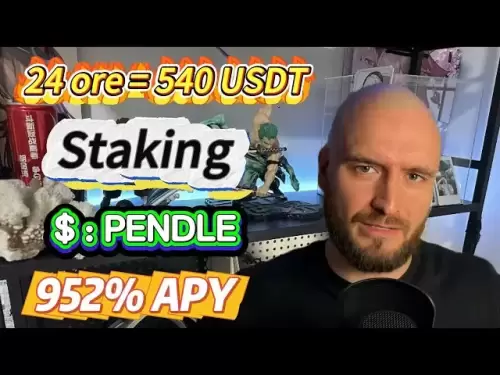-
 Bitcoin
Bitcoin $108,165.4587
0.78% -
 Ethereum
Ethereum $2,456.3517
1.15% -
 Tether USDt
Tether USDt $1.0003
0.00% -
 XRP
XRP $2.1934
0.05% -
 BNB
BNB $650.0935
0.52% -
 Solana
Solana $151.3905
2.69% -
 USDC
USDC $0.9998
0.00% -
 TRON
TRON $0.2751
-0.32% -
 Dogecoin
Dogecoin $0.1640
0.87% -
 Cardano
Cardano $0.5631
0.57% -
 Hyperliquid
Hyperliquid $38.7115
4.69% -
 Bitcoin Cash
Bitcoin Cash $493.1868
-0.39% -
 Sui
Sui $2.8217
3.61% -
 Chainlink
Chainlink $13.3994
2.08% -
 UNUS SED LEO
UNUS SED LEO $9.1632
0.94% -
 Avalanche
Avalanche $18.0318
1.97% -
 Stellar
Stellar $0.2388
0.35% -
 Toncoin
Toncoin $2.8763
1.41% -
 Shiba Inu
Shiba Inu $0.0...01160
1.59% -
 Litecoin
Litecoin $86.6393
1.29% -
 Hedera
Hedera $0.1485
0.16% -
 Monero
Monero $315.7948
1.56% -
 Polkadot
Polkadot $3.4240
1.88% -
 Bitget Token
Bitget Token $4.6314
-0.44% -
 Dai
Dai $0.9998
-0.01% -
 Ethena USDe
Ethena USDe $1.0002
-0.01% -
 Uniswap
Uniswap $7.2110
2.59% -
 Aave
Aave $270.6087
6.07% -
 Pi
Pi $0.5350
0.52% -
 Pepe
Pepe $0.0...09545
1.26%
Why is the token distribution model so important? What risks do different distribution methods bring?
A well-designed token distribution model fosters a healthy ecosystem, while a poor one can lead to centralization and manipulation, impacting the token's value and project governance.
May 08, 2025 at 03:07 pm
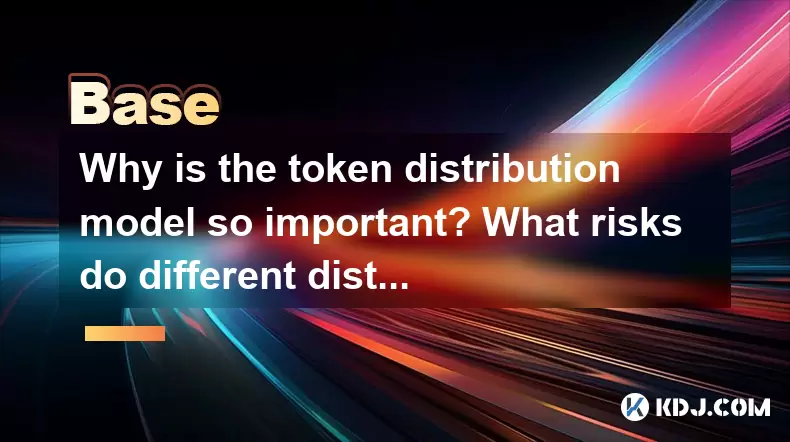
The token distribution model is a critical aspect of any cryptocurrency project, as it directly impacts the project's success, the token's value, and the overall ecosystem's health. Understanding why the token distribution model is so important and the risks associated with different distribution methods can help investors and project teams make informed decisions.
The Importance of Token Distribution Models
A token distribution model outlines how tokens are allocated and distributed among various stakeholders, including the project team, investors, and the community. The model influences the token's initial and long-term value, as well as the project's governance and community engagement. A well-designed distribution model can foster a healthy ecosystem, while a poorly designed one can lead to centralization, manipulation, and decreased trust.
Impact on Token Value and Market Dynamics
The token distribution model directly affects the token's value and market dynamics. A fair and transparent distribution can lead to a more stable and predictable token price, as it encourages broad participation and reduces the risk of market manipulation. Conversely, an uneven distribution can result in price volatility and potential manipulation by large holders, known as "whales."
Influence on Project Governance and Community Engagement
The distribution model also plays a crucial role in project governance and community engagement. Allocating tokens to the community can incentivize participation and foster a sense of ownership among users. This can lead to a more decentralized and democratic governance structure. On the other hand, concentrating tokens in the hands of a few can lead to centralized decision-making and reduced community involvement.
Risks Associated with Different Distribution Methods
Different token distribution methods come with their own set of risks. Understanding these risks is essential for both project teams and investors.
Initial Coin Offerings (ICOs)
ICOs were a popular method of token distribution in the early days of cryptocurrencies. In an ICO, tokens are sold to the public in exchange for other cryptocurrencies or fiat money. While ICOs can raise significant funds quickly, they come with several risks:
- Regulatory Uncertainty: ICOs often face regulatory scrutiny, and projects may face legal challenges or be forced to refund investors.
- Scams and Fraud: The ICO space has been plagued by scams, where projects raise funds and then disappear with the money.
- Overvaluation: ICOs can lead to overvaluation of tokens, as the hype and speculation can drive prices to unsustainable levels.
Airdrops
Airdrops involve distributing tokens for free to existing cryptocurrency holders or participants in certain activities. Airdrops can be an effective way to distribute tokens widely and engage the community. However, they also come with risks:
- Dilution of Value: Airdrops can lead to a dilution of the token's value, as the increased supply can outpace demand.
- Sybil Attacks: Malicious actors can create multiple wallets to claim more tokens than intended, undermining the fairness of the distribution.
- Lack of Engagement: If not properly targeted, airdrops can result in tokens being distributed to individuals who have no interest in the project, leading to a lack of engagement.
Staking and Mining
Some projects distribute tokens through staking or mining mechanisms. Staking involves locking up tokens to support the network and earn rewards, while mining involves using computational power to validate transactions and earn tokens. These methods can incentivize participation and secure the network, but they also have risks:
- Centralization: Staking and mining can lead to centralization if a small number of participants control a large portion of the network's resources.
- Security Risks: Mining, in particular, can be vulnerable to 51% attacks, where a group of miners control more than half of the network's mining power and can manipulate transactions.
- Environmental Concerns: Proof-of-work mining, used by some cryptocurrencies, consumes significant amounts of energy, raising environmental concerns.
Private Sales and Venture Capital
Private sales and venture capital investments involve selling tokens to a select group of investors before a public sale. These methods can provide projects with the necessary funds to develop and grow. However, they also come with risks:
- Centralization of Wealth: Private sales can lead to a concentration of tokens in the hands of a few wealthy investors, potentially leading to market manipulation.
- Lack of Transparency: Private sales often lack the transparency of public sales, making it difficult for retail investors to assess the fairness of the distribution.
- Investor Influence: Venture capital investors may exert significant influence over the project's direction, potentially at the expense of the broader community's interests.
Token Vesting and Lockup Periods
Many projects implement token vesting and lockup periods to mitigate some of the risks associated with token distribution. Vesting involves gradually releasing tokens over time, while lockup periods prevent tokens from being sold immediately. These mechanisms can help:
- Prevent Dumping: Vesting and lockup periods can prevent early investors and team members from selling their tokens immediately, reducing the risk of a price crash.
- Encourage Long-Term Commitment: By incentivizing long-term holding, vesting and lockup periods can encourage participants to remain committed to the project's success.
- Align Incentives: These mechanisms can align the incentives of different stakeholders, as everyone benefits from the project's long-term success.
Conclusion
The token distribution model is a crucial element of any cryptocurrency project, influencing the token's value, market dynamics, project governance, and community engagement. Different distribution methods come with their own set of risks, from regulatory uncertainty and scams in ICOs to centralization and environmental concerns in staking and mining. Understanding these risks and implementing fair and transparent distribution models can help projects build trust, foster a healthy ecosystem, and achieve long-term success.
Frequently Asked Questions
How can a project ensure a fair token distribution?
A project can ensure a fair token distribution by implementing a transparent and well-communicated distribution model. This can include using a combination of methods such as airdrops, staking, and public sales, while also implementing vesting and lockup periods to prevent early dumping. Engaging the community in the decision-making process and regularly updating them on the distribution plan can also help build trust and ensure fairness.
What role does token distribution play in preventing market manipulation?
Token distribution plays a crucial role in preventing market manipulation by ensuring that no single entity or group of entities has too much control over the token's supply. A well-distributed token supply can make it more difficult for whales to manipulate the market, as there are more participants with a stake in the token's value. Implementing vesting and lockup periods can also help prevent large-scale selling that could be used to manipulate the market.
How can investors assess the risks associated with a project's token distribution model?
Investors can assess the risks associated with a project's token distribution model by carefully reviewing the project's whitepaper and other documentation. They should look for details on the allocation of tokens to different stakeholders, the methods used for distribution, and any vesting or lockup periods in place. Investors should also research the project team's background and track record, as well as the project's community engagement and transparency. Comparing the project's distribution model to industry best practices and seeking advice from experienced cryptocurrency investors can also help assess the risks.
What are some examples of successful token distribution models in the cryptocurrency space?
Several projects have implemented successful token distribution models. For example, Uniswap used a retroactive airdrop to distribute its UNI tokens to users who had previously interacted with the protocol, rewarding early adopters and fostering a strong community. Another example is Filecoin, which used a combination of public sales, private sales, and mining to distribute its FIL tokens, while also implementing a vesting schedule to prevent early dumping. These projects demonstrate how a well-designed token distribution model can contribute to a project's success and the health of its ecosystem.
Disclaimer:info@kdj.com
The information provided is not trading advice. kdj.com does not assume any responsibility for any investments made based on the information provided in this article. Cryptocurrencies are highly volatile and it is highly recommended that you invest with caution after thorough research!
If you believe that the content used on this website infringes your copyright, please contact us immediately (info@kdj.com) and we will delete it promptly.
- South Korea, Crypto, and Global Markets: Riding the Digital Wave to New Highs
- 2025-06-29 20:50:12
- Bitcoin Eyes $108K: Will Trump's Nod Push BTC to a New All-Time High?
- 2025-06-29 21:10:12
- Pengu Pumps: Bullish Flags and Whale Wallets Fuel the Fire!
- 2025-06-29 21:10:12
- XRP to $20,000? Crypto Developers Eyeing Ripple's Potential
- 2025-06-29 21:15:12
- Lido, stETH, and Governance: A New Era of Shared Power?
- 2025-06-29 20:52:14
- Litecoin, Algorand, and the Crypto Landscape: Key Trends and Insights
- 2025-06-29 21:15:12
Related knowledge
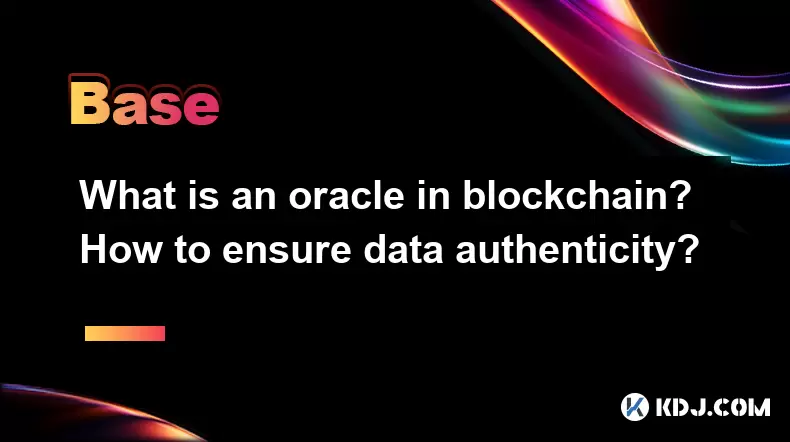
What is an oracle in blockchain? How to ensure data authenticity?
Jun 19,2025 at 08:49pm
Understanding the Role of an Oracle in BlockchainIn the context of blockchain technology, an oracle serves as a bridge between the blockchain and external data sources. While blockchains are inherently secure and decentralized, they cannot access real-world information on their own. Oracles enable smart contracts to interact with off-chain data such as ...
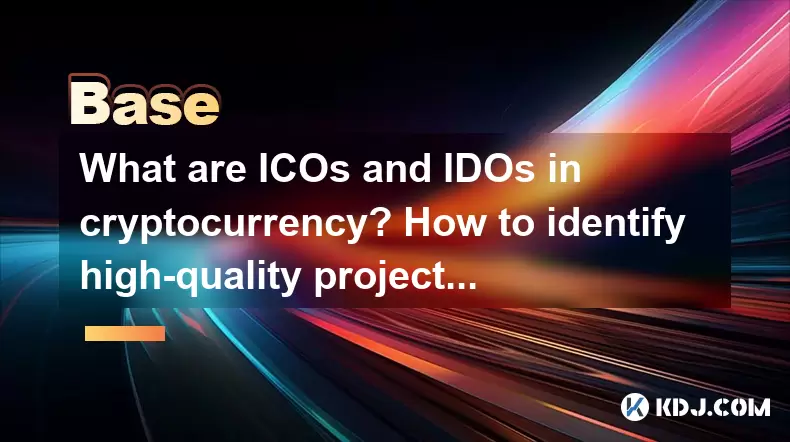
What are ICOs and IDOs in cryptocurrency? How to identify high-quality projects?
Jun 22,2025 at 11:49am
Understanding ICOs in CryptocurrencyInitial Coin Offerings (ICOs) are fundraising mechanisms used by cryptocurrency startups to raise capital for their projects. In an ICO, a company creates and sells its own tokens to investors in exchange for established cryptocurrencies like Bitcoin or Ethereum. The process typically involves the release of a whitepa...
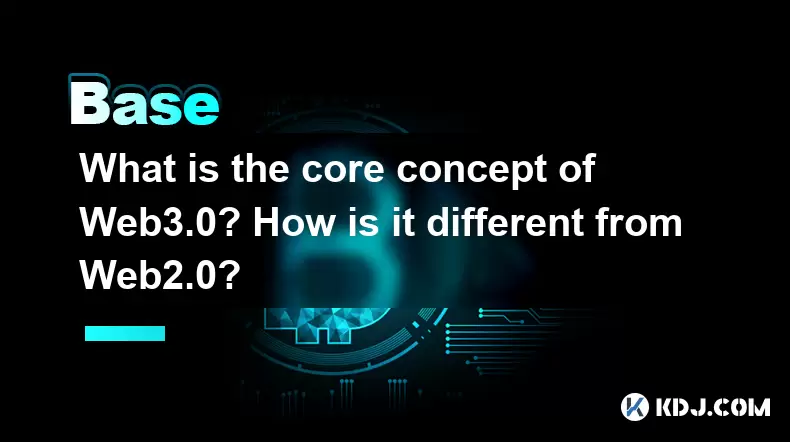
What is the core concept of Web3.0? How is it different from Web2.0?
Jun 21,2025 at 05:56pm
Decentralization as the Foundation of Web3.0The core concept of Web3.0 revolves around decentralization, which fundamentally challenges the centralized architecture of Web2.0. In Web3.0, control and ownership are distributed across a network rather than being held by a central authority or corporation. This is achieved primarily through blockchain techn...
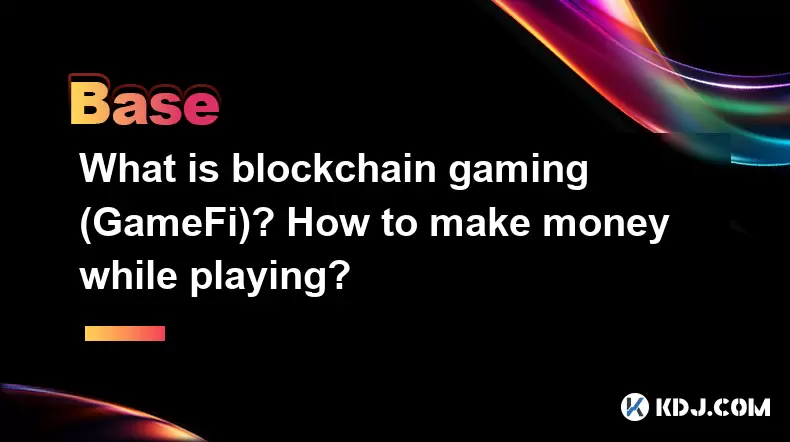
What is blockchain gaming (GameFi)? How to make money while playing?
Jun 20,2025 at 07:56am
Understanding Blockchain Gaming (GameFi)Blockchain gaming, often referred to as GameFi, is a fusion of blockchain technology and video games. It enables players to own in-game assets through non-fungible tokens (NFTs) and earn rewards via cryptocurrencies or token-based systems. Unlike traditional games where items are controlled by centralized develope...
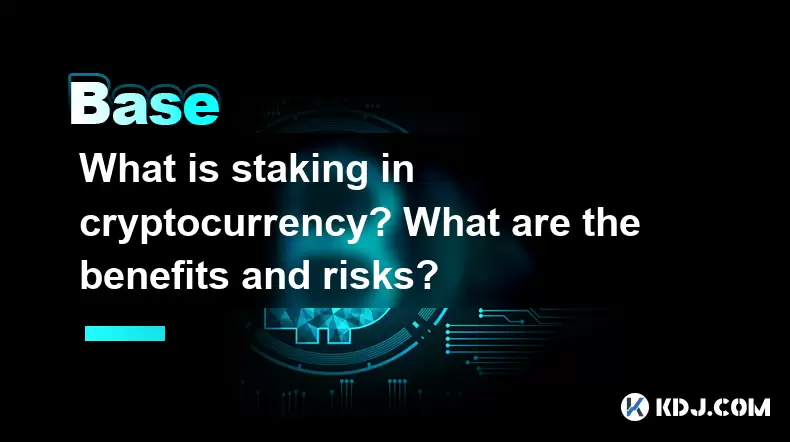
What is staking in cryptocurrency? What are the benefits and risks?
Jun 22,2025 at 10:01am
Understanding the Concept of Staking in CryptocurrencyStaking in cryptocurrency refers to the process of actively participating in transaction validation on a blockchain network that uses a Proof-of-Stake (PoS) consensus mechanism. Instead of miners competing to solve complex mathematical puzzles as in Proof-of-Work systems like Bitcoin, PoS blockchains...
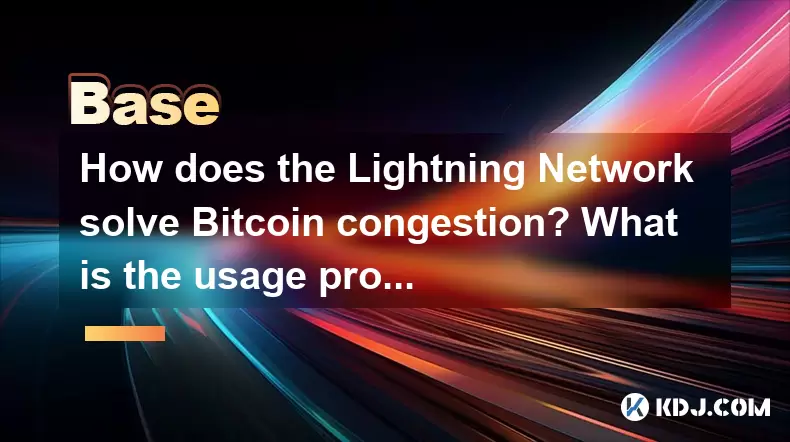
How does the Lightning Network solve Bitcoin congestion? What is the usage process?
Jun 23,2025 at 06:21pm
Understanding Bitcoin Network CongestionBitcoin, as a decentralized digital currency, operates on a blockchain that records every transaction in a public ledger. Each block has a limited size, typically 1 megabyte, which allows for only a certain number of transactions per second (TPS). When the number of transactions increases, the network becomes cong...

What is an oracle in blockchain? How to ensure data authenticity?
Jun 19,2025 at 08:49pm
Understanding the Role of an Oracle in BlockchainIn the context of blockchain technology, an oracle serves as a bridge between the blockchain and external data sources. While blockchains are inherently secure and decentralized, they cannot access real-world information on their own. Oracles enable smart contracts to interact with off-chain data such as ...

What are ICOs and IDOs in cryptocurrency? How to identify high-quality projects?
Jun 22,2025 at 11:49am
Understanding ICOs in CryptocurrencyInitial Coin Offerings (ICOs) are fundraising mechanisms used by cryptocurrency startups to raise capital for their projects. In an ICO, a company creates and sells its own tokens to investors in exchange for established cryptocurrencies like Bitcoin or Ethereum. The process typically involves the release of a whitepa...

What is the core concept of Web3.0? How is it different from Web2.0?
Jun 21,2025 at 05:56pm
Decentralization as the Foundation of Web3.0The core concept of Web3.0 revolves around decentralization, which fundamentally challenges the centralized architecture of Web2.0. In Web3.0, control and ownership are distributed across a network rather than being held by a central authority or corporation. This is achieved primarily through blockchain techn...

What is blockchain gaming (GameFi)? How to make money while playing?
Jun 20,2025 at 07:56am
Understanding Blockchain Gaming (GameFi)Blockchain gaming, often referred to as GameFi, is a fusion of blockchain technology and video games. It enables players to own in-game assets through non-fungible tokens (NFTs) and earn rewards via cryptocurrencies or token-based systems. Unlike traditional games where items are controlled by centralized develope...

What is staking in cryptocurrency? What are the benefits and risks?
Jun 22,2025 at 10:01am
Understanding the Concept of Staking in CryptocurrencyStaking in cryptocurrency refers to the process of actively participating in transaction validation on a blockchain network that uses a Proof-of-Stake (PoS) consensus mechanism. Instead of miners competing to solve complex mathematical puzzles as in Proof-of-Work systems like Bitcoin, PoS blockchains...

How does the Lightning Network solve Bitcoin congestion? What is the usage process?
Jun 23,2025 at 06:21pm
Understanding Bitcoin Network CongestionBitcoin, as a decentralized digital currency, operates on a blockchain that records every transaction in a public ledger. Each block has a limited size, typically 1 megabyte, which allows for only a certain number of transactions per second (TPS). When the number of transactions increases, the network becomes cong...
See all articles





















